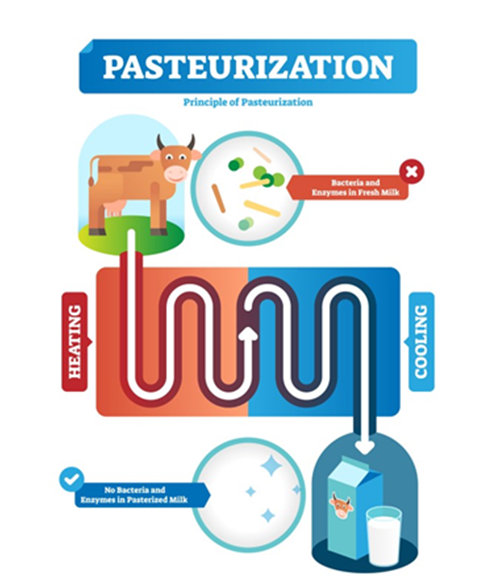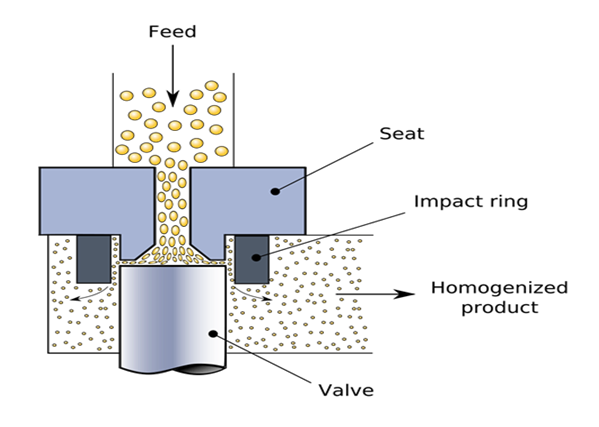
Do cows find plastic tasty?
April 14, 2023
6 Common Myths about Ghee
May 22, 2023Homogenized milk vs Pasteurized milk: Key Differences
Remember those days when our parents forced us to drink milk before school? The times you had to keep a watch on milk on the burner and ended up boiling it over. We know, the struggle is real. Despite the recent rise in popularity of dairy alternatives like nut, pea, and even soy milk, traditional cattle milk is still part of our childhood memories and even now the primary choice of most families. Ingrained in our culture immensely it has become an important component in Indian Diets for a very long time.
While it is an essential part of diets, how many of us know about the significant processes- homogenization and pasteurization behind it? Although these two processes concern milk production. Both have their own benefits and purposes. To make understanding this a little bit easier, here’s a basic guide to understanding Homogenized milk and Pasteurized milk terminology and key differences to keep in mind before your next grocery shopping.
Pasteurization
Pasteurization is the process of treating milk with heat and suddenly cooling it down. The process of pasteurization destroys microorganisms and enzymes that allow milk to spoil. Hence, it eliminates growing bacteria and their spores.

Because not just the cool packet in your kitchen that makes this possible but the way the milk is specially treated before they reach your home. The secret lies in a technique of pasteurization, in which fresh foods are temporarily heated to high temperatures to kill bacteria before being quickly cooled and distributed to grocery stores. As discussed in our previous piece on adulteration – Milk has transformed into a convenient source of contamination because of its increased demands. Hence, pasteurization becomes an essential process in maintaining safety in milk consumption. Pasteurization has gradually evolved to be one of the most significant technologies ever created, by extending the shelf life of food products. To get rid of harmful organisms and germs in milk, this procedure heats and then rapidly cools the milk, arresting the bacteria and keeping the milk protein intact. You do not receive the same amount of nutrients from unpasteurized milk as you would from other types of milk. This distinguishes it greatly and guarantees that you won’t experience any serious medical conditions. FSSAI too mandates pasteurization of milk to reduce the number of disease causing pathogens, if the pasteurized product is stored as indicated and consumed before its expiry date.
Homogenization
Homogenization is breaking down substances such as fat globules in milk. It makes small particles distribute equally throughout the milk. Therefore, homogenization allows the milk to mix well.

There are no additives used in the mechanical process of homogenization. Similar to pasteurized milk, there are arguments in favour of and against it. Homogenizing milk aids the dairy industry immensely since it enables them to combine milk from various herds without any problems. Homogenization also results in a longer shelf life which is in turn achieved through sterilization, which is appealing to some consumers and also enables large dairy farms to ship farther and conduct business seamlessly. Homogenization in this process is accomplished by blocking the cream from rising to the top of the product. In addition to that, homogenization makes it easier for dairies to filtrate out the fat and create two percent, one percent, and skim milk. Yet, like with other mechanical operations, homogenizing milk changes both the size of the fat globules and the arrangement of the fat and protein molecules, which may influence how they behave.
To Summarise:
| PASTEURIZATION | HOMOGENIZATION |
|
Heating of milk before it’s quickly cooled back
|
Breakdown of fat molecules |
|
First process of milk production
|
Second process of milk production |
|
Arrests bacterial growth
|
Prevents milk separation |
|
Prevents spoilage
|
Easy to digest |
|
Aids in the safety of milk
|
Aids in the shelf life of milk |
As homogenization and pasteurization are two entirely different processes, it is possible to find pasteurized milk that hasn’t been homogenized and vice versa. Many people are unaware of the distinctions between pasteurization and homogenization, which are two processes that the majority of milk on store shelves undergoes. With this brief guidance on key distinctions, we hope to make your next grocery shopping a bit more informed and easy.




